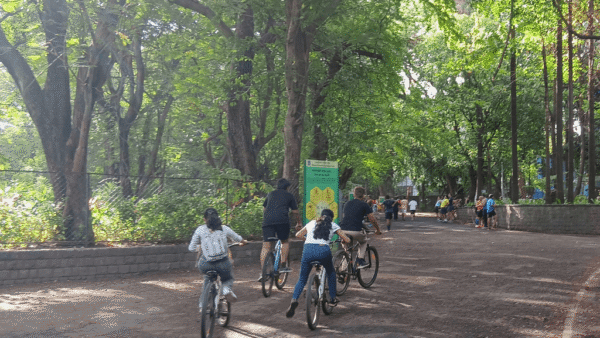In cities, we build more. Governments bend backwards to encourage and facilitate this, including through legislative means, to build more apartment buildings, commercial complexes, malls, roads, expressways, metro networks and so on. Since India embraced economic liberalisation in 1991, governments have been committed to the ‘build more’ philosophy in the name of urban development or urbanisation. Governments have promoted this by privatising development works, including those of larger public interest that concern people’s fundamental rights—health care, education, recreation, transportation, housing, and other amenities.
We are given to believe that higher volumes of construction and supply of building stock will ease the shortfall crisis in housing, transport, and amenities. This is not true as the steady decline in the quality of life in cities, deprivation, and marginalisation of an increasing number of people shows. The ‘build more’ approach has become the default way to define and understand development in cities but it is deficient and limited in many ways.
More buildings and highways do not make a city or enhance its liveability. As the liveability in cities falls, it is time that we pause and reflect on the ‘build more’ approach to city-making because governments, builders, and politicians – those who are directly or indirectly invested in pursuing the ‘build more’ philosophy – are not going to do so. Let’s ask ourselves: Who benefits from the ‘build more’ philosophy – the city, its people and its ecology or merely a few vested individuals and organisations?
Undoubtedly, privatisation has provided a massive boost to the objective of building more and there’s no denying that the construction industry is among the top few in India for its investment and employment. In 2024 alone, the industry was projected to grow 11.2 percent to reach Rs 25 lakh crore in value and its compounded annual growth rate projected during 2024-28 is 9.6 percent to reach Rs 36 lakh crore by 2028.[1] The construction industry reportedly employs a work force of nearly 32 million across the country, supported by many millions in ancillary industries and equipments, and is the second largest contributor to the GDP after the agricultural sector.[2]
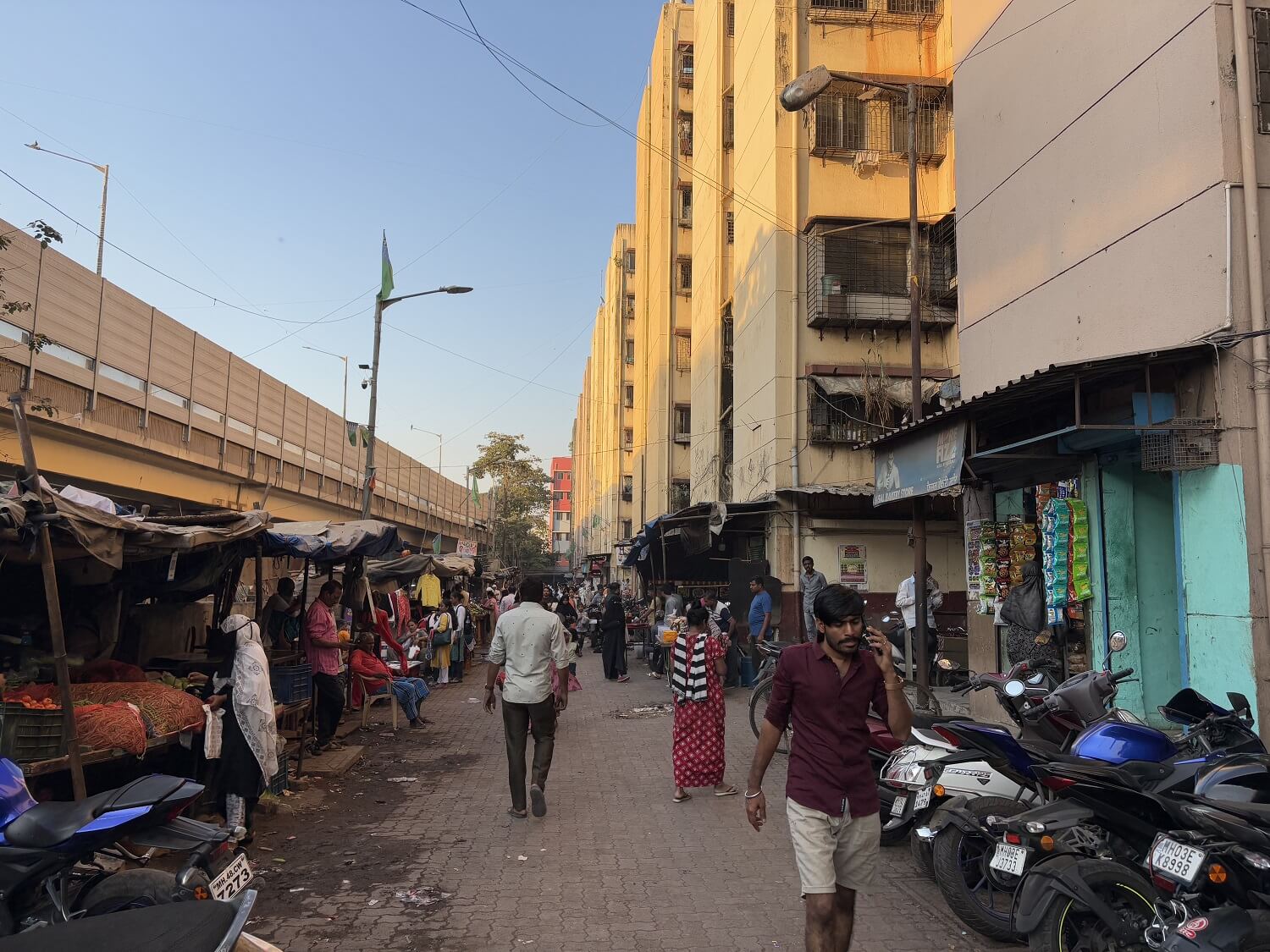
Photo: Jashvitha Dhagey
Cities have offered an incredible opportunity for capital investment and business turnover through real-estate development and construction but its relentless expansion has resulted in people’s right to the city and access to various amenities being ignored and mercilessly downsized. Pushed to the peripheries, people have had to negotiate for fringe benefits from private developers and agencies mandated to carry out construction. An example is the massive slums redevelopment exercise where residents are forced to interact with private developers rather than their government. In fact, as the build more approach became the default norm in cities, people’s access to and dialogue with their elected governments became minimal, even rare.
People’s participation in imagining or reimagining spaces in their cities, in planning and suggesting ways forward, in decision-making in their neighbourhoods has taken a hit. This has had its fallout on a number of issues that concern our lives, a few significant ones are explained below with some ideas to address each one.
Identities erased, how to rebuild
The aggression and brutality with which governments carry out their mission to build more in cities is manifested in the decimation of community networks, cultures, social relations, and their very identity. As well-settled neighbourhoods are demolished to build individualised mega gated building complexes, that turn their backs to their surroundings, entire histories and socio-economic networks are wiped out. Interesting multi-cultural and intricately intertwined spatial order, which evolved through collective endeavours over decades, is erased too.
Communities and neighbourhoods that together defined a city and its nuanced characteristics are replaced by anonymous brutalist architecture—monotonous, repetitive, and haphazard that impose uniform lifestyles. When this pattern recurs in one neighbourhood after another, cities become divided. This reflects not only spatially but also in people’s relationships and in their collective power. Government sanctioned acts of forced demolition, displacement, segregation of old settlements and neighbourhoods in the name of transformation – by applying the ‘build more’ philosophy – has meant that new social and physical relationships are rooted in exclusivity of a few and the exclusion of many. And this is imposed on the city landscapes too which show fragmentation.
What are the alternatives? The transformation and reconstruction of slums, old quarters, and informal settlements must first consider measures of conservation, restoration and readaptation. Thereafter, demolition and reconstruction can be pursued but decisions must be taken by those affected to build amenities that are deficient and cannot be made through conservation and restoration measures such as open spaces, amenities, wider accesses. A mixed neighbourhood-based city planning and development programme that brings various people together must form the basis of this process. It is the responsibility of governments, not private developers, to promote and steer such processes. Governments must revert to doing so rather than hand over land parcels across a city to private agencies whose primary aim is real estate interests and profits, and not the city and all its people.
The neighbourhood-based city planning can facilitate effective participation by all or certainly many people—a bottom-up process which can be made truly democratic and representative with public interest, local needs and people’s demands articulated. Not an imposing top-down master-plan that fails to recognise local needs and demands that are different in different areas. Such processes also enable people and places to develop their collective identity and a sense of ownership of their respective neighbourhoods – and the city.
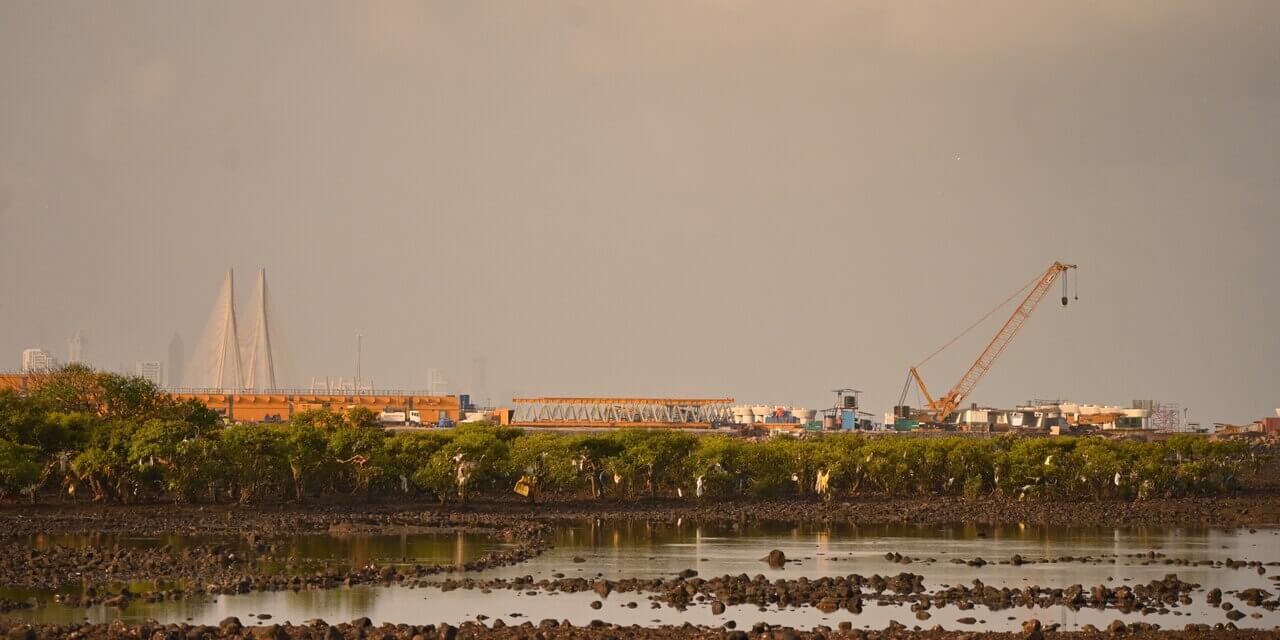
Photo: Wikimedia Commons
Booming real estate, alarming shortfall in housing
With an overwhelming thrust on private builders-led construction of individual properties with least concern for density, open spaces, spaces between buildings, and plurality in a neighbourhood, the idea of the city as a cohesive, grid-like, and well-ordered structure is cemented. To facilitate the ‘build more’ approach, governments have all but given up planning for the city. Development plans are largely land-use and land-apportionment exercises, not a vision for the city.
Housing and amenities are turned into commodities for sale and profiteering. Weak or no regulation of their prices makes them unaffordable to the majority. The question then is: who is the ‘build more’ for? Cities cannot thrive with this model. The failure of the ‘build more’ philosophy is evident in the fact that despite a booming real estate market, the alarming shortfall in housing and amenities has not been addressed.[3]
It has yielded exclusive cities or spaces, and has put housing and basic amenities out of the reach of vast sections of the population who work and live in cities.
What is the alternative? A development plan that defines an integrated and all-inclusive urban form is not necessary. Planning and urban design are valuable when governments undertake them with the participation of all people, and ensure that development leads to an inclusive and just city. An important aspect of the ‘build more’ model that turns land – and most people’s access to land – difficult and exclusive, given its high price in the so-called free market, is to borrow from Latin American nations where land prices are fixed at different rates for different uses by the state. For example, land meant for affordable housing is priced less than land for high-end housing or malls in the same neighbourhood.[4]
This approach limits the impetus for private developers and agencies to build more as a way to merely count their profits. This also opens up discussions and conversations in neighbourhoods about democratic use of spaces and buildings to be constructed. It calls for governments – not private developers and agencies – to define land use as well as land prices based on demands and shortfalls, and not merely watch as the market-led ‘build more’ philosophy devours the city.
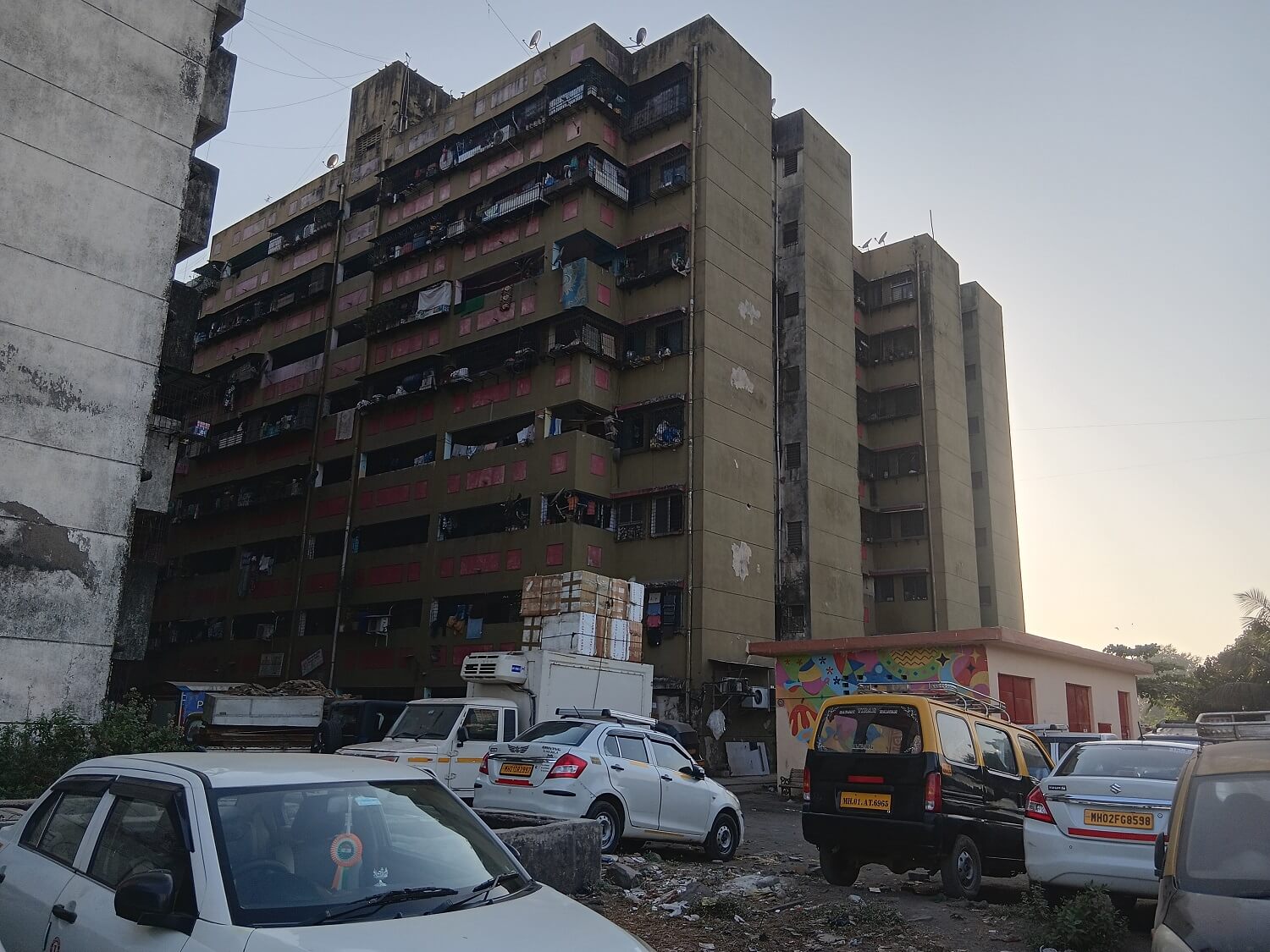
Photo: Nikeita Saraf
Digging deep and wide
The extent to which the construction of buildings is permitted in cities across India is hurting not only people but also the environment. For example, in Mumbai, which generally provides a model for other cities, the basement of a building can go several floors deep and construction can cover an entire plot to the edge of its boundaries. This means there’s no open ground space for trees, rain water percolation, and heat mitigation. Every neighbourhood now has buildings jostling at close quarters with hardly any open space between them, and without trees around.
Trees and green cover are the first casualties in the aggressive build more philosophy. As a matter of fact, not only buildings but road construction and concretisation of common spaces have fallen prey to the ‘build more’ thrust. In all this, trees are seen as obstructions or dispensable, and brutally hacked to death. Soon, entire cities could be rid of trees. Such a model of development obviously intensifies the urban heat-island effect.[5] Heat-stress and the resulting ailments affect the physical and mental health of a large number of people.[6]
What is the alternative? In the interest of sustainable development, and in response to the deepening climate crisis, mandatory open spaces must be maintained on ground in every plot and neighbourhood, not on podiums as practised today. Basement construction must not be permitted below the mandatory ground open space. This would allow space for trees and other vegetation to grow which helps to mitigate rising temperatures, heat-island effect, soak rain water and reduce the runoff which floods cities, and enrich the soil that supports a vast and rich biodiversity.
Dwindling Commons
In the ‘build more’ model, common property resources in a city – including public land – are transferred to, rather gifted to, private agencies and corporates on a platter, often at a nominal rate or free of cost. In the process, natural areas such as hills, forests, lakes, rivers, wetlands, open spaces and other commons meant for all people are destroyed or denuded. [7] [8]
The shrinking commons means that the principle of the larger public good that should guide democratic governments will forever elude us.
This decline and deterioration have adversely affected the quality of life in cities—the lack of open space, loss of tree cover, landfilling of rivers, creeks, wetlands, salt pans, and hacking of forests and green cover has impacted people’s health and wellbeing, especially of the poor and marginalised. Sadly, the otherwise deeply connected and interdependent relationship between people, places, and the environment is strained or severed by the prevailing political order that backs the ‘build more’ approach. For both reasons—the deteriorating living conditions and critical state of the environment—the ‘build more’ approach must be considered a disease, an urban disease that could ruin cities.
What is the alternative? All natural areas and elements must be considered as common property resources and, therefore, protected and integrated into city planning. Buildings and cities must be constructed with nature with the aim of a sustainable and healthy environment for people to live and work in. And urban development must reflect the higher interwoven state of nature–people relationship.
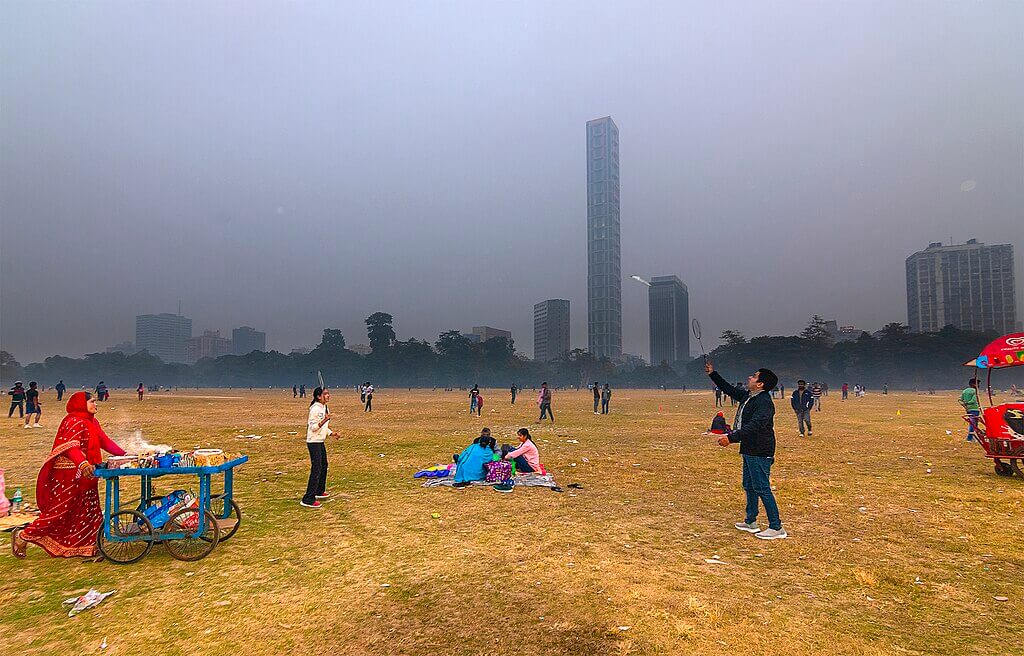
Photo: Wikimedia Commons
Cities for all, cities by right
To even consider and discuss alternatives, we must re-envision our cities and persuade governments to do so too. We must dismantle the many walls, literal and figurative, built across the landscapes in cities. We must un-barricade spaces, design spaces and neighbourhoods that are sustainable in every way, that promote harmony and resilience, that protect natural areas and common property resources as an integral aspect of urban planning and design.
The more people resist the ‘build more’ philosophy and demand to be heard, the stronger they articulate our rights – human rights, civic rights, civil rights, gender rights, and the right to form associations and organisations extending to the right to participate in urban design and planning exercises.
PK Das is an urban planner, architect and activist with more than four decades of experience. He has been working to establish a close relationship between his discipline, urban ecology and people through a participatory planning process. He has received numerous awards including LSE Urban Age award and the prestigious Jane Jacobs International Medal for his work in revitalising open spaces in Mumbai, rehabilitating slums and initiating participatory planning process. He is the founder of Question of Cities.
Cover photo: Wikimedia Commons




